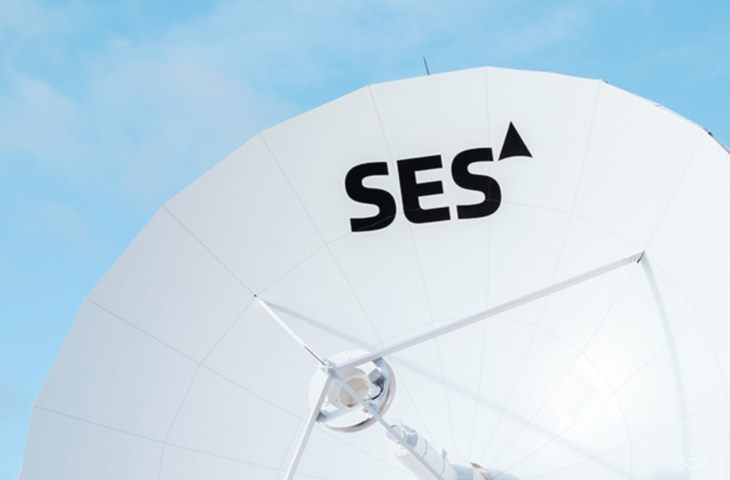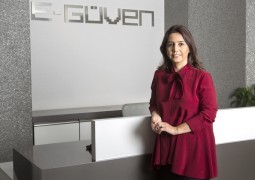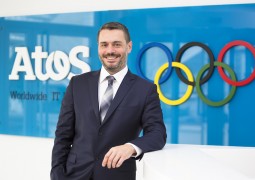SES announced full year 2015 results
by 0

Orbital satellite operator SES, who’s one of teleports operates in Riga, Latvia reports year 2015 revenue and profit up 5% over prior year. SES’s differentiated strategy focuses on three key elements: Globalisation (building scale to serve rapidly increasing demand for global solutions), Verticalisation (focused development of differentiated capabilities in the four market verticals), Dematuring (shaping the future user experience, entrenching satellite’s key role in the digital ecosystem).
Karim Michel Sabbagh, President and CEO, commented: “SES’s on-going globalisation contributed to 5.0% growth in reported revenue. Focus on delivering differentiated solutions generated revenue growth in three of the four market verticals now defining SES’s global business. We also strengthened our Enterprise business. Video grew in developed and emerging markets, supported by SES’s superior growth in HD and being first to add commercial Ultra HD channels. SES expanded long-term commercial relationships across Enterprise and Mobility with major global customers including Global Eagle Entertainment and Airbus Defence and Space, and notably signing two major inflight connectivity agreements early in 2016 with Panasonic and Gogo for new HTS capacity on SES- 14 and SES- 15. SES is committed to maintaining a progressive dividend, and has proposed an increase of 10% for the 2015 dividend.”
By delivering differentiated and global satellite-enabled solutions, SES serve four key market verticals – Video, Enterprise, Mobility and Government.
Video – 67% of group revenue (2014: 66%)
- Reported revenue grew 7.5% to EUR 1,354.9 million
- HDTV channels grew 18.3% to 2,230, strengthening HD penetration from 28.9% to
30.7%
- HDTV market share up from 24.9% to 25.8% (the largest of any satellite operator)
- Over 380 new TV channels (170 in HD) added across fast-growing emerging markets
- First in commercial Ultra HD, with eight channels now broadcast globally over SES satellites
SES’s substantial technical reach in prime video neighborhoods contributed to an 11.3% increase in total TV channels broadcast over SES satellites to 7,268 channels. This was well ahead of the rest of the satellite industry (up 2.3%) and further reinforced SES’s industry-leading position. SES is also number one in HDTV channels, which grew by 18.3% to 2,230 channels as SES captured growth across all regions. In total, nearly 60% of all channels are now broadcast in the MPEG-4 compression standard.
European TV channels grew 9% to nearly 2,600, while HDTV channels increased 26% to 675. During the period, SES secured a long-term contract to broadcast BBC World News, the free-to-air (FTA) international news channel, in HD. In August 2015, Deutsche Welle signed long-term capacity agreements on three satellites (ASTRA 4A, ASTRA 5B and SES-5) to broadcast German and English-language channels in Eastern Europe and Africa. In December 2015, Viasat, a DTH broadcaster and pay TV operator owned by Swedish media and entertainment group Modern Times Group, extended its capacity contract to broadcast 230 channels in the Nordic and Baltic countries via ASTRA 4A and SES-5. In addition, continued demand for high-quality content drove an 11% increase in HD+’s paying subscriber base to over 1.8 million.
In Ultra HD (UHD), SES was the first satellite operator to secure commercial agreements to broadcast this next generation video experience. SES now broadcasts eight commercial Ultra HD channels – pearl.tv (Europe’s first commercial UHD channel) and Fashion One 4K (the world’s first global UHD channel), as well as Airtel 4K, Dish UHD Promo, High 4K TV, INSIGHT, NASA TV UHD and UHD-1 – and also signed (in July 2015) a commercial agreement to provide Sky Deutschland with additional capacity for Ultra HD broadcasts.
Mobility – 3% of group revenue (2014: 2%)
- Reported revenue grew 47.4% to EUR 52.9 million
- Expanded relationship with Global Eagle Entertainment on current fleet and future HTS capacity
- Major long-term agreements recently signed with Panasonic and Gogo for additional capacity
- SES now serves the three major global aeronautical connectivity providers
- Developing SES’s maritime business with KVH Industries and SkyStream
SES has continued to scale up its investments and capabilities to support major global service providers in delivering a superior user experience and meeting rapidly growing passenger demand for connectivity. In aeronautical connectivity, SES has built on its strong commercial relationships with the world-leading service integrators – Global Eagle Entertainment, Gogo and Panasonic. Today, the SES fleet serves up to 2,000 aircraft per year, carrying up to 300,000 airline passengers, with inflight connectivity.
Enterprise – 15% of group revenue (2014: 17%)
Government – 13% of group revenue (2014: 11%)
Forthcoming launches
SES will launch seven new satellites between 2016 and end-2017. These seven satellites will increase available capacity by 180 net (36 MHz) transponders, or 12% of current total available capacity, while capacity in the International segment will grow by 21%.
Three of these satellites (SES-12, SES-14 and SES-15) will also carry a total of 36 GHz of HTS capacity, which is equivalent to around 250 (36 MHz) transponder equivalents.
Financial guidance
SES’s FY 2016 revenue is expected to be between EUR 2,010 million and EUR 2,050 million.





